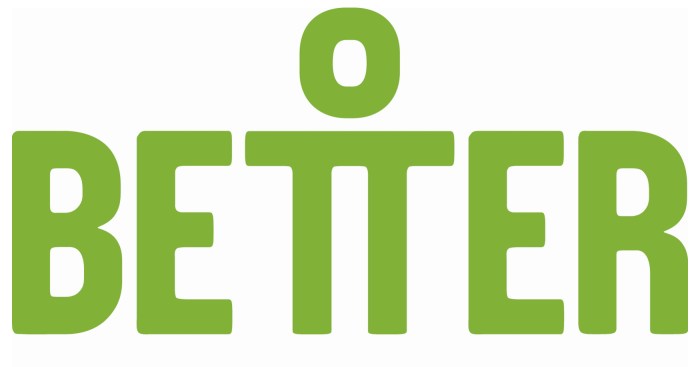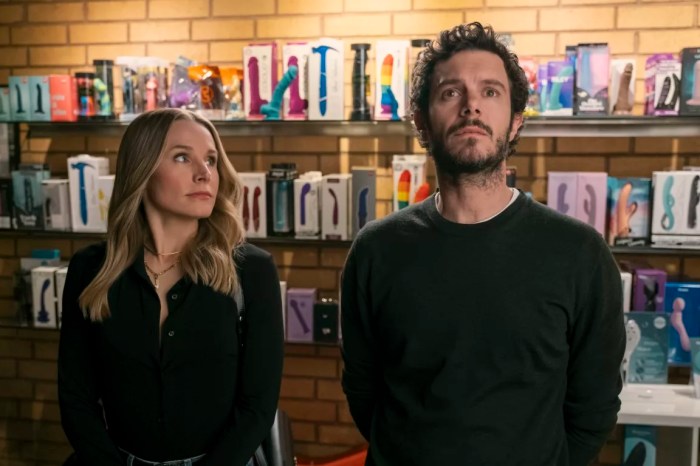7 reasons why people who love asking questions are great leaders: Leaders who ask insightful questions excel in many ways. They cultivate a deep understanding of diverse perspectives, fostering open dialogue and constructive feedback within their teams. This approach leads to improved problem-solving, trust-building, and ultimately, more effective decision-making.
In today’s complex world, effective leadership demands more than just decisiveness. The ability to engage in meaningful dialogue, to actively seek diverse viewpoints, and to encourage a culture of questioning is paramount. By exploring different perspectives and fostering open communication, leaders can unlock innovation, build stronger relationships, and inspire their teams to achieve extraordinary results.
Enhancing Understanding & Perspective
A leader’s ability to understand and appreciate diverse viewpoints is crucial for effective decision-making and team cohesion. A questioning approach fosters this understanding by encouraging open dialogue and constructive feedback. Leaders who actively seek input from various team members create a more inclusive and collaborative environment, leading to innovative solutions and a stronger sense of shared purpose.Inquisitiveness isn’t just about gathering information; it’s about actively listening to and understanding different perspectives.
This deep understanding allows leaders to identify potential blind spots and tailor their strategies to better suit the needs and concerns of their team. It’s a dynamic process of continuous learning and adaptation.
Diverse Viewpoints and Inquisitiveness
Leaders who are inquisitive are more likely to grasp diverse viewpoints within their teams. This stems from a proactive approach to seeking out varied perspectives, rather than relying solely on their own pre-conceived notions. For example, a project manager who asks clarifying questions about different team members’ roles and responsibilities can better understand the potential challenges and roadblocks each individual might face.
This proactive engagement ensures the team’s collective intelligence is leveraged effectively.
Actively Seeking Input from Team Members
Actively seeking input from various team members is paramount to fostering a collaborative and innovative environment. When leaders solicit feedback from every member of the team, they demonstrate trust and value the contributions of each individual. This practice helps to build team morale and empowers team members to feel valued and heard. This, in turn, leads to a more engaged and productive workforce.
For example, a sales manager who routinely gathers input from salespeople about customer preferences and market trends can gain a deeper understanding of the sales process and make more informed decisions.
Encouraging Open Dialogue and Constructive Feedback, 7 reasons why people who love asking questions are great leaders
Creating an environment where open dialogue and constructive feedback are encouraged is essential for fostering a strong team dynamic. This involves establishing clear communication channels and actively listening to differing viewpoints, even those that challenge the status quo. Leaders should encourage open discussion, facilitate constructive debate, and provide a safe space for team members to express their concerns and ideas without fear of reprisal.
A well-structured feedback mechanism is key to this approach. For example, regular team meetings dedicated to brainstorming and feedback sessions can be effective tools for promoting open dialogue.
Identifying and Addressing Potential Blind Spots
Questioning can help leaders identify and address potential blind spots. By actively seeking input from diverse perspectives, leaders gain a more comprehensive understanding of potential challenges or areas where their own viewpoints might be limited. This proactive approach helps them to avoid making decisions based on incomplete information or biased perceptions. For example, a marketing manager who asks questions about the target audience’s needs and preferences from various team members can gain a more nuanced understanding of the market and avoid marketing campaigns that miss the mark.
Leadership Styles and Questioning Approaches
| Leadership Style | Approach to Questioning | Example |
|---|---|---|
| Transformational | Open-ended, exploratory questions aimed at understanding motivations and inspiring action. Questions focus on “what if” scenarios and long-term vision. | “How can we innovate our processes to better serve our customers?” |
| Transactional | Focused on clarifying roles, responsibilities, and performance metrics. Questions are direct and task-oriented, often used to monitor progress. | “What are the key performance indicators for this project?” |
| Servant | Questions focused on understanding the needs of the team members. Questions prioritize the well-being and growth of individuals. | “How can I better support you in achieving your goals?” |
| Autocratic | Questions are primarily used to gather information and confirm decisions. Questions tend to be closed-ended and directive. | “What are the available options for this project?” |
Problem-Solving Prowess

Asking probing questions is a cornerstone of effective leadership. It’s not just about gathering information; it’s about uncovering the underlying causes of problems and fostering innovative solutions. Leaders who excel at questioning are adept at dissecting complex issues, identifying critical factors, and inspiring their teams to find creative and effective solutions. This ability to dissect problems through insightful questioning is essential for navigating challenges and driving positive change.Leaders who master the art of questioning approach problems not as obstacles to be avoided but as opportunities to learn and grow.
By asking the right questions, they can uncover hidden assumptions, identify potential blind spots, and empower their teams to develop more comprehensive and impactful solutions. This approach cultivates a culture of continuous improvement and fosters a more dynamic and adaptable organization.
Identifying Root Causes
Leaders who ask probing questions delve beyond surface-level symptoms to uncover the root causes of problems. This involves asking “why” repeatedly, digging deeper into the underlying factors contributing to the issue. For example, if sales are declining, a leader might ask, “Why are sales declining?” The answer might be “Customers are dissatisfied with the product quality.” Further questioning might reveal that the decline in quality stems from a shortage of raw materials.
This process of relentless questioning helps pinpoint the true source of the problem, enabling targeted and effective solutions.
The Link Between Questioning and Creative Problem-Solving
Probing questions are catalysts for creative problem-solving. By challenging assumptions and encouraging diverse perspectives, questions can spark innovative ideas and solutions. Leaders who foster a culture of questioning encourage their teams to think outside the box and explore unconventional approaches. For instance, a leader facing a production bottleneck might ask, “What if we re-engineered the production process?” or “Are there alternative materials that could reduce manufacturing costs?”.
These open-ended questions stimulate creative thinking and lead to more effective solutions.
Examples of Questions Leading to Innovative Solutions
Effective questioning can lead to remarkable breakthroughs. Consider a company facing high employee turnover. A leader might ask, “What aspects of the work environment contribute to employee dissatisfaction?” or “How can we create a more engaging and supportive work environment?” By focusing on the root causes of the problem, such as inadequate training, poor communication, or lack of recognition, the leader can identify opportunities for improvement and develop innovative solutions, such as improved training programs or better communication channels.
Comparing Problem-Solving Methodologies
Various problem-solving methodologies exist, and questioning plays a critical role in each. The scientific method, for example, relies heavily on questioning to formulate hypotheses, test them, and refine understanding. In the Design Thinking process, questioning is used to empathize with users, define problems, ideate solutions, and prototype and test them. Similarly, the DMAIC (Define, Measure, Analyze, Improve, Control) methodology utilizes questioning to identify areas for improvement, analyze data, and implement corrective actions.
Each method emphasizes different types of questions, but the core principle of using questioning to understand and address the problem remains consistent.
Different Types of Questions to Stimulate Problem-Solving
To foster a culture of problem-solving, leaders should ask a variety of questions. Here’s a list of examples:
- Clarifying Questions: These questions seek to gain a deeper understanding of the problem. Examples include: “Can you provide more context?”, “What are the specific details?”, “How does this relate to other issues?”
- Challenging Questions: These questions encourage critical thinking and challenge assumptions. Examples include: “What are the potential downsides of this approach?”, “What if we tried something different?”, “Are there any alternative perspectives?”
- Provocative Questions: These questions encourage creative thinking and exploration of unconventional solutions. Examples include: “What if we didn’t have this constraint?”, “What are some unusual approaches we could consider?”, “How could we disrupt the status quo?”
Using a combination of these types of questions, leaders can effectively guide their teams toward innovative and effective problem-solving.
So, curious minds make great leaders, right? It’s true, those who love asking questions often excel. But how do you translate that inquisitiveness into a more manageable daily routine? Check out these 13 ways you can make tomorrow easier day 13 ways you can make tomorrow easier day for some practical tips. By planning ahead and streamlining your tasks, you’ll find yourself with more time to ponder those important questions and lead effectively.
Ultimately, that questioning mindset, combined with a well-structured day, leads to stronger leadership skills.
Building Trust & Rapport
Asking questions is more than just a tool for gathering information; it’s a powerful catalyst for building trust and rapport within a team. Effective leaders understand the profound connection between open-ended inquiries and the development of strong, collaborative relationships. Genuine curiosity and a willingness to understand diverse perspectives form the bedrock of trust.Open-ended questions, rather than simply seeking answers, foster a deeper understanding of individual viewpoints and motivations.
This creates an environment where team members feel heard, valued, and respected, which are crucial elements in building a strong and trusting team dynamic. This, in turn, enhances productivity and morale, enabling the team to achieve shared goals more effectively.
The Connection Between Questions and Trust
Open questions, by nature, encourage thoughtful responses. They demonstrate a genuine interest in understanding the other person’s perspective. When team members feel heard and valued, a sense of trust and rapport naturally develops. This process is fundamentally important in creating a positive and productive work environment. It’s not just about collecting data; it’s about establishing a foundation of mutual respect and understanding.
Demonstrating Genuine Interest
Leaders who ask questions show that they care about the thoughts and feelings of their team members. This demonstrates genuine interest, which is a powerful catalyst for building trust. A leader who actively seeks to understand different viewpoints fosters an inclusive environment where everyone feels valued. Instead of simply dictating tasks or procedures, asking thoughtful questions helps team members feel like active participants in the process.
The Role of Active Listening
Active listening is inextricably linked to effective questioning. It’s not enough to ask questions; leaders must also attentively listen to the responses. This involves paying close attention to both the verbal and nonverbal cues, reflecting back what is heard, and asking clarifying questions when needed. Leaders who actively listen demonstrate a commitment to understanding, creating an atmosphere of trust and mutual respect.
This attentive listening creates a safe space for team members to share their ideas and concerns without fear of judgment.
Impact of Questioning Techniques on Team Morale
| Questioning Technique | Potential Impact on Team Morale |
|---|---|
| Closed-ended questions (e.g., “Did you finish the report?”) | Can feel superficial and less likely to foster trust. May discourage open communication. |
| Open-ended questions (e.g., “What are your thoughts on the new project?”) | Encourages deeper discussion and understanding. Creates an environment of shared decision-making. |
| Probing questions (e.g., “What are some of the challenges you’re encountering?”) | Demonstrates empathy and helps identify areas needing support. Builds trust by showing concern. |
| Reflective questions (e.g., “So, you’re saying…”) | Confirms understanding and validates the team member’s perspective. Encourages open communication. |
Different questioning techniques have different impacts on team morale. Leaders should strategically choose the type of question that best fits the situation and the desired outcome.
Empathy and Understanding Through Questions
Leaders can use questions to demonstrate empathy and understanding by focusing on the underlying needs and concerns of their team members. Instead of focusing solely on tasks, asking questions about how team members are feeling or what challenges they are facing fosters a supportive and understanding environment. This empathy-building process creates a team that feels valued and supported, thereby increasing productivity and job satisfaction.
For example, asking “How can I support you in overcoming this challenge?” directly addresses the team member’s needs and demonstrates empathy. This approach creates a stronger bond and trust within the team.
Motivating & Inspiring Teams

Asking insightful questions is more than just a leadership technique; it’s a powerful catalyst for team motivation and inspiration. Effective leaders understand that fostering a culture of curiosity and open dialogue creates a dynamic environment where team members feel valued, empowered, and motivated to contribute their best work. This approach not only boosts engagement and morale but also paves the way for a truly collaborative and innovative team.Leaders who ask thought-provoking questions act as facilitators, guiding the team towards shared understanding and problem-solving.
Curious minds often make great leaders, and that inquisitive nature extends beyond the boardroom. For example, a strong understanding of the job market and how to stand out from the crowd is crucial for a successful job hunt. Knowing how to craft a compelling resume and cover letter is just one piece of the puzzle, but a robust job search strategy, like the one detailed in the best job search strategy that goes beyond an incredible cover letter , is key.
Ultimately, the ability to ask the right questions is vital in identifying opportunities and navigating challenges, traits of great leaders.
This process nurtures a collaborative environment, encouraging open communication and active participation from all members. This approach encourages the team to view challenges not as obstacles, but as opportunities for growth and learning.
Inspiring and Motivating Team Members Through Questions
Well-placed questions can spark a sense of ownership and responsibility in team members. By posing questions that encourage reflection and critical thinking, leaders empower team members to take initiative and actively participate in problem-solving. This approach fosters a collaborative environment where individuals feel valued and appreciated for their unique contributions. Leaders who effectively leverage questions create a culture of continuous learning and improvement within the team.
Boosting Team Engagement and Morale
A significant aspect of motivating teams involves understanding and addressing individual needs. Questions that delve into individual motivations, aspirations, and concerns can foster a stronger connection between team members and their leaders. This connection is crucial in creating a positive and supportive work environment, boosting engagement and morale. Effective questioning techniques can also help identify potential roadblocks or challenges that team members might be facing.
Addressing these challenges proactively can significantly improve overall team morale.
The Relationship Between Questions and a Collaborative Environment
Questions are fundamental to building a collaborative environment. By encouraging open dialogue and diverse perspectives, questions help to break down silos and foster a sense of shared purpose. This collaborative spirit is essential for teams to achieve their objectives effectively. Leaders who utilize questioning techniques foster a culture of trust and mutual respect, which are vital for successful teamwork.
Challenging Assumptions and Encouraging Growth
Leaders can use questions to challenge existing assumptions and encourage team members to think critically. This process of questioning the status quo helps to identify potential areas for improvement and innovation. Asking “What if?” questions can spark creative solutions and new approaches to problem-solving. By posing such questions, leaders inspire a culture of innovation and continuous learning.
Highlighting Individual Strengths and Contributions
By focusing on specific strengths and experiences, questions can help to highlight the unique contributions of each team member. Tailoring questions to individual talents allows team members to showcase their expertise and feel valued for their individual contributions. This recognition fosters a sense of ownership and pride in the team’s success. Leaders who identify and acknowledge individual strengths empower their teams to reach their full potential.
Decision-Making Excellence: 7 Reasons Why People Who Love Asking Questions Are Great Leaders
Asking insightful questions is crucial for effective leadership. Leaders who master the art of questioning can gather the necessary information, clarify objectives, and effectively assess and mitigate risks. This approach allows for more informed decisions, leading to improved outcomes for the team and the organization.Leaders can use questioning as a powerful tool for gathering the information required for sound decisions.
By asking the right questions, leaders can uncover crucial details and perspectives that might otherwise remain hidden. This process fosters a deeper understanding of the situation, allowing for a more nuanced and comprehensive approach to problem-solving.
Leveraging Questions for Informed Decisions
Effective decision-making relies heavily on accurate information. Leaders can actively gather this data by posing targeted questions to team members, stakeholders, and subject matter experts. Open-ended questions encourage detailed responses, providing a richer understanding of the issue at hand. These questions help uncover hidden assumptions and potential biases, allowing leaders to make more objective decisions. Specific examples include asking about the potential impact of various scenarios or the feasibility of different approaches.
Clarifying Goals and Objectives
Questions can help clarify goals and objectives by encouraging discussion and ensuring everyone is on the same page. By asking clarifying questions, leaders can ensure that everyone understands the desired outcomes and the specific steps required to achieve them. This process fosters a shared understanding and commitment to the goals, minimizing ambiguity and potential conflicts later on. For instance, asking “What specific metrics will we use to measure success?” can refine the understanding of the desired outcome and help establish a clear path toward achieving the goal.
Risk Assessment and Mitigation
Asking questions about potential risks and challenges is critical for proactive risk assessment and mitigation. This process involves asking “What could go wrong?” and “What are the potential consequences?” These questions help leaders anticipate potential problems and develop contingency plans. By systematically exploring potential obstacles, leaders can develop strategies to minimize the impact of negative events. This is vital in strategic decision-making, allowing for better planning and resource allocation.
Examples of Question Types for Effective Decision-Making
Different types of questions can elicit different responses and insights. Here are some examples of how asking different types of questions can improve decision-making:
- Open-ended questions: “What are your thoughts on the proposed strategy?” These questions encourage detailed responses and a wider range of perspectives.
- Probing questions: “Can you elaborate on the potential challenges associated with this approach?” These questions delve deeper into specific issues and uncover hidden complexities.
- Hypothetical questions: “If we encountered this obstacle, what would be our next steps?” These questions help leaders anticipate potential problems and prepare contingency plans.
- Situational questions: “In a similar situation in the past, what worked well, and what didn’t?” These questions draw on past experiences to inform current decisions.
A Framework for Questioning
The table below Artikels different types of questions to ask before, during, and after a decision is made.
| Phase | Question Type | Example |
|---|---|---|
| Before Making a Decision | Exploratory, Diagnostic | “What are the potential benefits and drawbacks of each option?” |
| During Decision-Making | Clarifying, Probing | “How does this option align with our overall strategy?” |
| After Making a Decision | Evaluative, Reflective | “What adjustments, if any, do we need to make based on the results?” |
Adaptability & Flexibility
A leader’s ability to adapt and adjust is crucial in today’s dynamic environment. The ability to navigate change, anticipate challenges, and encourage learning within a team are essential qualities for effective leadership. Embracing flexibility allows leaders to respond effectively to unforeseen circumstances and seize new opportunities. A questioning approach plays a significant role in fostering this adaptability.Questioning cultivates a proactive approach to change.
Instead of passively reacting to events, leaders who ask probing questions can anticipate potential issues and adjust strategies in advance. This proactive approach, grounded in anticipation, is a key element in effective leadership in the face of evolving situations.
Anticipating Challenges Through Questioning
A key aspect of adaptability is the ability to anticipate challenges. Leaders who ask insightful questions can identify potential problems before they escalate. This proactive approach enables them to develop contingency plans and adjust strategies in advance, minimizing disruptions and maximizing opportunities. This process involves examining various scenarios and potential outcomes, and asking questions to understand the implications of each.
Leaders can gain a clearer understanding of potential risks and opportunities by exploring different perspectives and possibilities.
Curious minds make great leaders, right? Seven reasons why question-askers excel are plentiful. But sometimes, understanding the unique challenges faced by shift workers – like those in the hospitality industry or healthcare – really highlights the importance of communication and empathy, which are core leadership skills. For a deeper dive into the quirky situations only loved ones of shift workers will truly comprehend, check out this insightful article on 10 things only loved ones people who shift work would understand.
Ultimately, the ability to ask insightful questions is crucial for any leader, as it fosters understanding and effective problem-solving.
Encouraging a Growth Mindset and Learning
Questioning encourages a growth mindset, fostering a culture of continuous learning and improvement within the team. By asking open-ended questions, leaders invite team members to explore different solutions and approaches. This iterative process promotes innovation and helps the team develop a deeper understanding of complex problems. It encourages team members to reflect on their own experiences and learn from both successes and failures.
Flexible Problem-Solving Through Questioning
A questioning approach fosters a flexible problem-solving strategy. By asking clarifying questions, leaders can break down complex problems into smaller, more manageable parts. This decomposition allows team members to analyze each component in detail, exploring various solutions and approaches. This process often leads to more creative and effective solutions than relying on a single, predetermined approach. Leaders who use questioning techniques can help teams to develop a range of possible solutions and adapt their strategies as new information becomes available.
Exploring New Possibilities and Perspectives
Questioning can open up new possibilities and perspectives. Leaders can encourage team members to consider alternative viewpoints and challenge existing assumptions by asking open-ended questions. This process fosters a more inclusive and creative environment, leading to innovative solutions and strategies. By encouraging diverse perspectives, teams can broaden their understanding of the problem and develop more comprehensive solutions. For example, asking “What if we approached this from a completely different angle?” can lead to unexpected and valuable insights.
By actively seeking diverse perspectives, teams can develop more well-rounded solutions.
Communication & Collaboration
Asking insightful questions is not just a sign of intellectual curiosity; it’s a powerful tool for fostering clear communication and collaborative environments. Leaders who master the art of questioning create a dynamic where ideas flow freely, misunderstandings are minimized, and teams work together more effectively. This approach cultivates a culture of shared understanding and empowers individuals to contribute their best work.Effective communication is a cornerstone of successful collaboration.
Leaders who prioritize questions encourage open dialogue, active listening, and a deeper understanding of perspectives. This leads to a more cohesive and productive team environment where everyone feels heard and valued. Questions are not just about gathering information; they are about creating opportunities for shared understanding and growth.
Improving Communication Clarity
Effective communication relies on a shared understanding of the message. Asking clarifying questions ensures that the intended meaning is conveyed accurately and received without misinterpretations. This proactive approach minimizes ambiguity and promotes a more precise and impactful exchange of information. By actively seeking clarification, leaders can ensure that everyone is on the same page, minimizing the potential for errors and fostering a smoother workflow.
Promoting Collaboration and Teamwork
Questions are catalysts for collaboration. By posing open-ended questions, leaders encourage active participation from all team members. This inclusive approach fosters a sense of shared responsibility and ownership, leading to more innovative solutions and improved outcomes. The use of questions helps to build bridges between team members, allowing them to better understand each other’s perspectives and work collaboratively towards common goals.
Facilitating Clear Communication with Different Question Types
Different types of questions can be used to elicit specific responses and encourage different communication styles. Open-ended questions, for example, invite detailed responses and encourage deeper thinking. Closed-ended questions can be useful for gathering specific information or confirming understanding. Probing questions can help to explore ideas further and uncover underlying assumptions.
Examples of Questions for Open Dialogue
To encourage open dialogue and shared understanding, leaders can use a variety of questioning techniques. For instance, “What are your thoughts on this proposal?” encourages open discussion and feedback. “How can we ensure this project aligns with our overall goals?” prompts critical thinking and strategic alignment. “What are some potential challenges we might encounter, and how can we mitigate them?” fosters proactive problem-solving and shared responsibility.
Communication Styles and Supporting Questions
| Communication Style | Supporting Questions |
|---|---|
| Direct and Concise | “What are the key takeaways from this report?” “What is the next actionable step?” |
| Collaborative and Inclusive | “What are your perspectives on this issue?” “How can we incorporate everyone’s ideas?” |
| Empathetic and Understanding | “What are your concerns about this project?” “How can we support you in this process?” |
| Analytical and Detail-Oriented | “What data supports this conclusion?” “What are the potential consequences of this decision?” |
Final Wrap-Up
In conclusion, questioning leaders are more than just great communicators; they’re architects of collaborative environments. Their ability to ask insightful questions fuels a culture of innovation, trust, and adaptability, ultimately driving teams towards success. By cultivating curiosity and actively seeking diverse viewpoints, these leaders unlock the full potential of their teams and inspire remarkable achievements. The power of the question, as we’ve seen, is immense.










